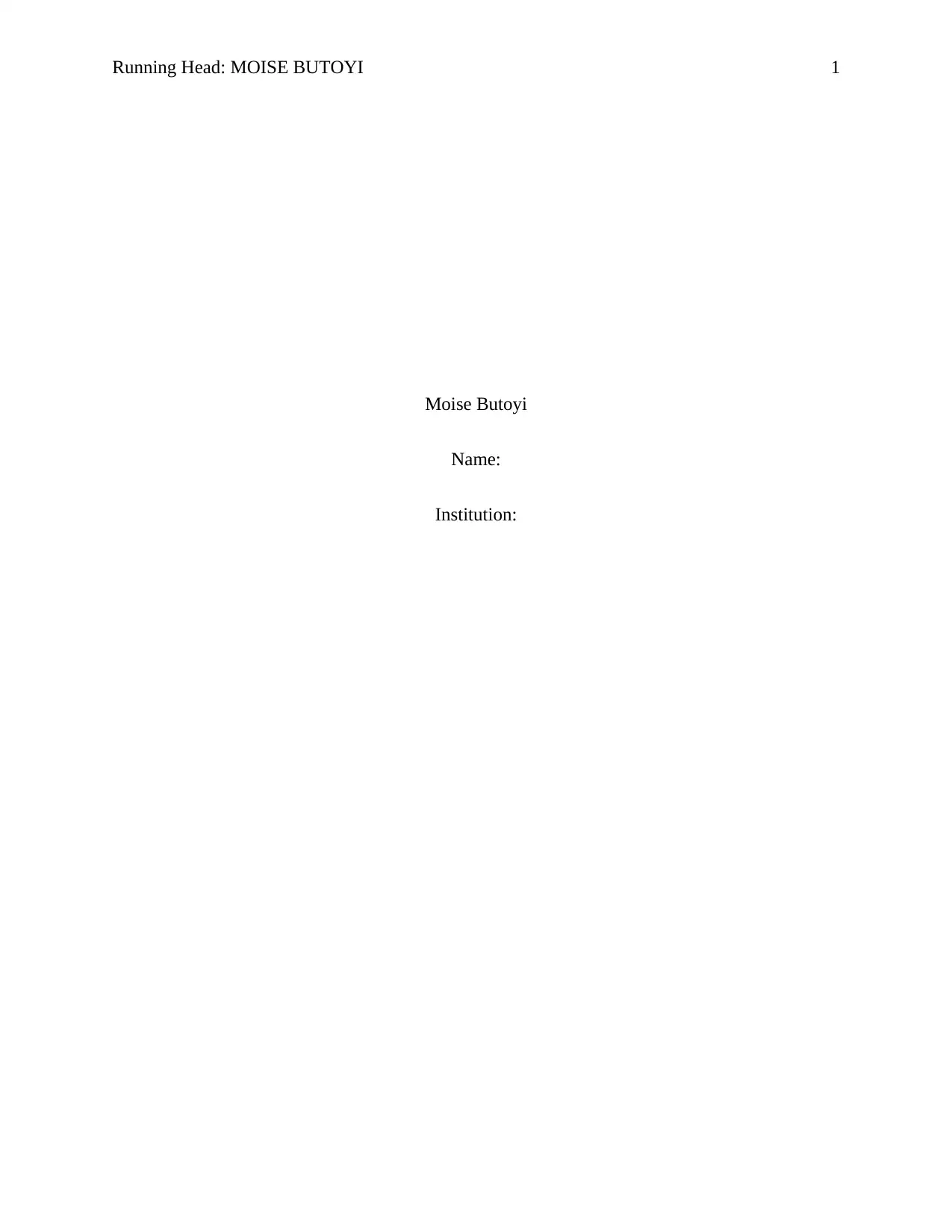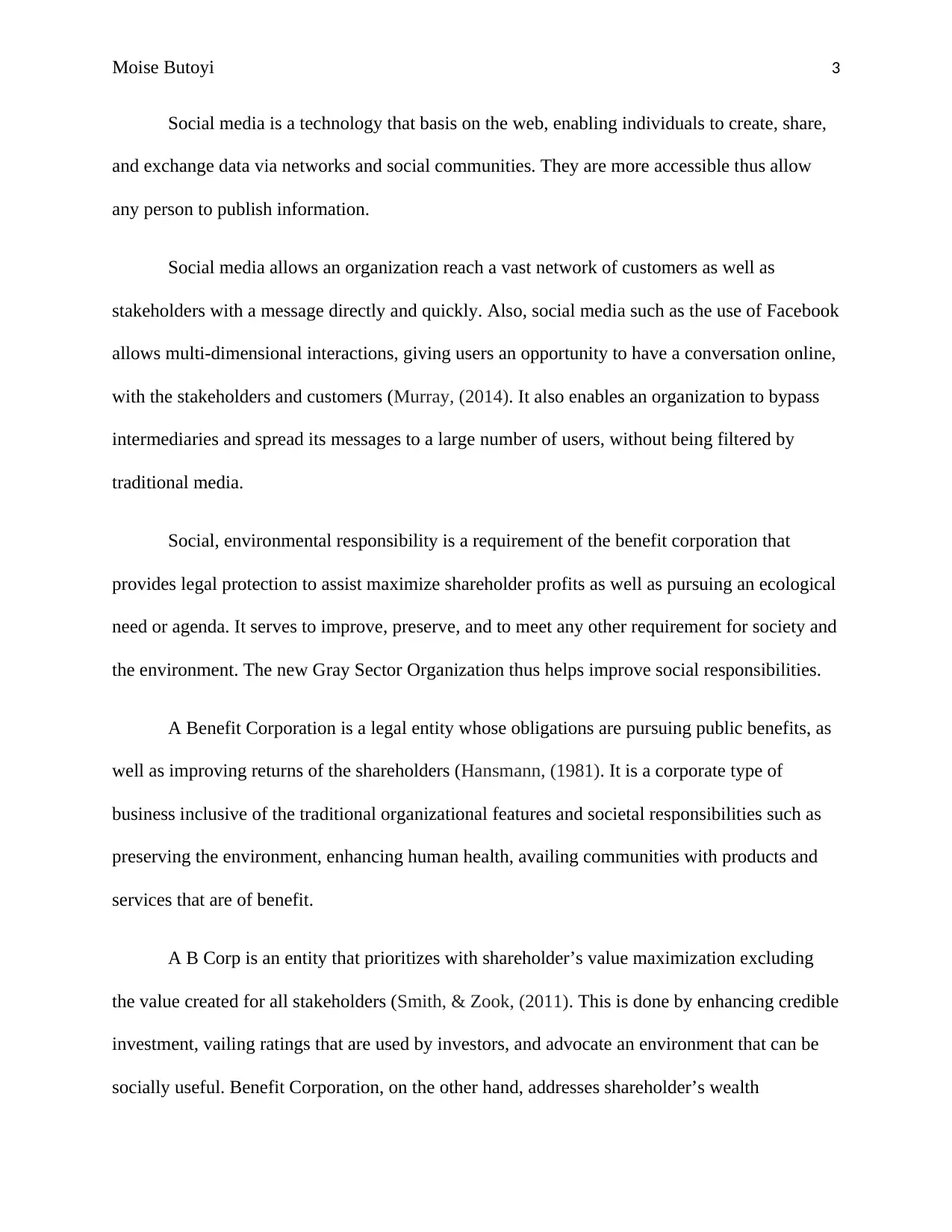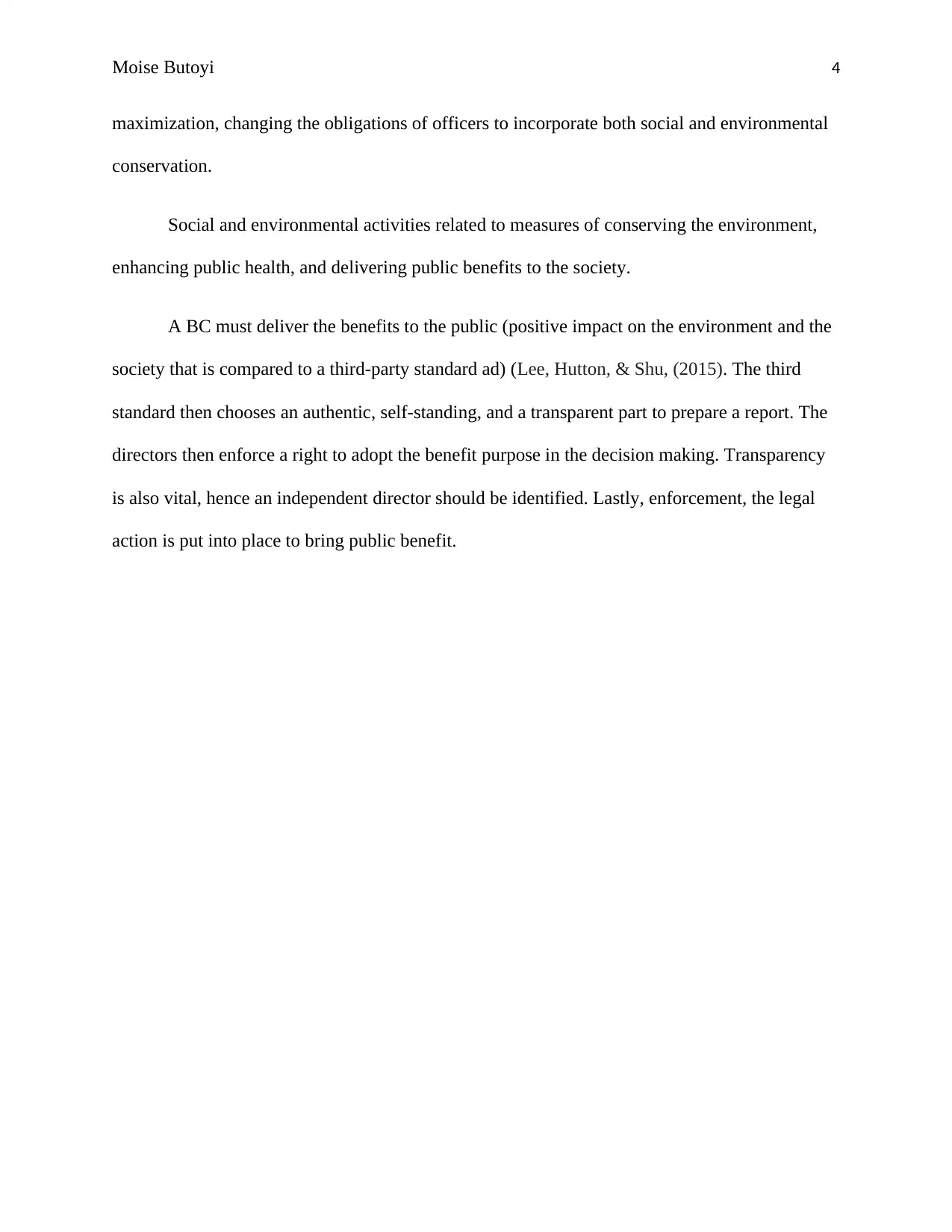Moise Butoyi Report: Analysis of Benefit Corporations and Social Media
VerifiedAdded on 2020/05/11
|5
|789
|156
Report
AI Summary
This report, authored by Moise Butoyi, delves into the evolving landscape of corporate social responsibility. It examines the concept of benefit corporations, legal entities designed to pursue public benefits alongside shareholder profits, and contrasts them with traditional corporate structures. The report analyzes how social media platforms facilitate direct communication between organizations and stakeholders, improving information dissemination and enabling multi-dimensional interactions. It explores the legal frameworks and mechanisms, including third-party standards and independent directors, that support and enforce benefit corporation objectives. The report also references key literature, including works by Hiller, Blankespoor, André, Stecker, Lee, and Loewenstein, to provide a comprehensive understanding of the topic.
1 out of 5












![[object Object]](/_next/static/media/star-bottom.7253800d.svg)